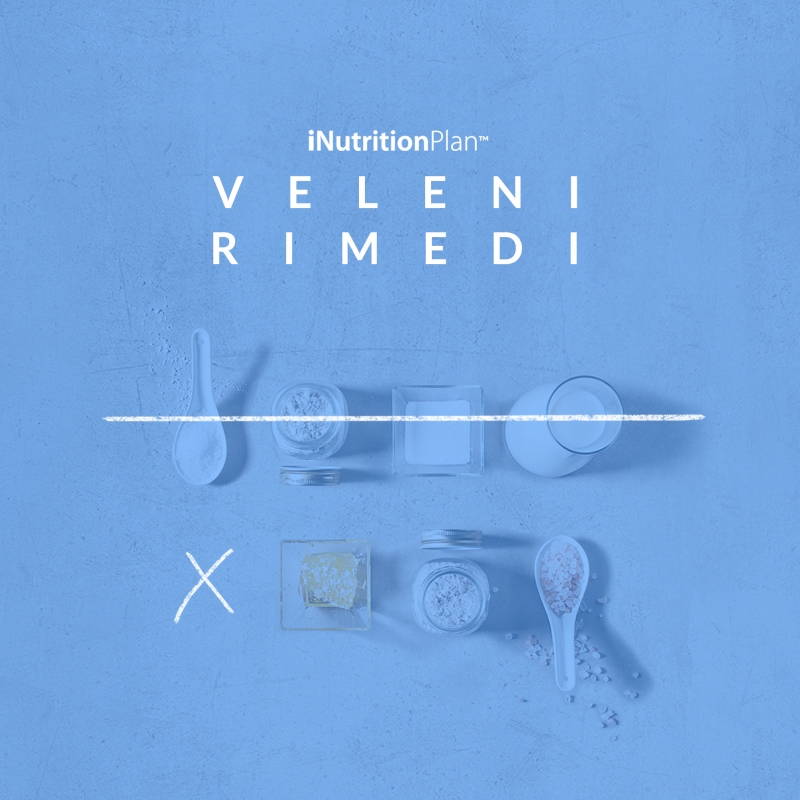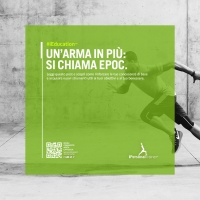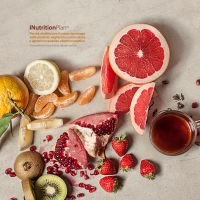Poisonous foods and their remedies. Refined substances, additives, colourings and sweeteners and all genetically modified products that the food industry proposes to us have in time proven to be extremely damaging to our bodies and our health. That also includes ormonati foods, foods of strange composition or origins (the dark side of meat and soya), chemical alterations and intolerances (subjective) to some food categories like dairy products for example. iNutritionPlan would like to take you by the hand and lead you to the road of remedies and good use, eliminating or limiting from your diet all that which is considered ‘poison’. The image that we are proposing identifies the first 4 elements that should be limited, or even better, eliminated from our diet;
1) KITCHEN SALT: apart from a recent published post (that would be a good read if you haven’t already done so) the principal reason why kitchen salt creates ugly consequences is tied to the fact that it has been refined, treated with chemical products, at the expense of its mineral components (almost inexistent) with a disproportionate use of sodium chloride, a killer element as far as health goes and damaging to our beauty. In fact the growth of blood pressure has been recognised as the principal side effect of a high use of sodium. High blood pressure is a direct cause of heart and kidney disease, the principal causes of disease and death in Europe. There are various substitutes that have a mineral content, a very low level of sodium and a fair measure of iodine, an indispensable element for the regulation of the thyroid and hormonal sphere. THE REMEDIES > The first solutions can be low sodium-iodate salt or unrefined salt, you can also start using precious salts for the properties that they have such as Himalayan pink salt or even Celtic salt (you still have to be careful in checking their origins and compositions as they might not be authentic like many other things that we buy unrefined or ecological). Whatever salt you choose to use, make sure you always use it in small doses (no more than 3-4gr each day) and keep in mind that in most foods that we use salt is already present.
2) REFINED SUGAR: this is treated with chemical substances and it is not an easy food to assimilate. We consume, as a medium, 24kg of sugar a year even if there is no shortage of alternatives. To be as white as it is it must go through numerous treatments: it is cleansed with calcium milk (thus losing its enzymes and salts); to then eliminate the excess calcium it is treated with CO2 as well as sulphurous acid; it is then filtered and whitened with animal carbon (that contains strong whitening and absorbent powers derived from animal bones and blood); then, to be finally completely white, it is coloured using colours that are often derived from tar (yes, the petroleum type) that is potentially cancerous. For this to be assimilated by us the sucrose extracts directly from our body vitamins and mineral salts, for example calcium. For this reason refined white sugar is a substance that creates a strong acidification in our blood, forcing our organism to dip into its mineral salts reserve in order to maintain an acceptable PH level. This has various consequences such as bone weakness and teeth decay, arthritis and osteoporosis. Our body, feeling the lack of these useful minerals, fights back and a number of symptoms concerning beauty also manifest themselves; hair loss, fat deposits, cellulite and water retention are just a few of the side effects that are provoked by a high use of sugar in our diets. What can we say also about the true and proper dependence of this ‘white powder’? We all know the effects that Glycaemia peaks in the blood can cause, provoked by rapid intakes of our much loved sugar. The problem is that this also effects our pancreas that, to fight this head on rush, releases insulin into our blood risking in some cases to cause a diabetic shock. We shouldn’t also forget that sugar, together with alcohol, is one of the biggest killers of the vitamin B that we have in our body causing grave illnesses, above all diabetes. We should also steer clear of artificial sweeteners, there is much to be said about these also; Cane sugar however, as long as it is not fake obviously (where it only has the colour which has been caused by heating up white sugar), is a decisively more healthy sugar even though its glycaemic impact is still high. THE REMEDIES > The best substitute is Honey (even if it is not always adaptable for sweetening), Stevia (as long as it is pure), Erythritol, Xylitol and Yacon Syrup.
3) REFINED FLOUR: this is treated by industrial grinding of the grains of wheat that eliminates the seed (the nutritive part of the grain that contains amino-acids, acid fats, mineral salts and vitamins from the group B and vitamin E) as well as the bran (the external part which is particularly rich in fibre). This brings about an impoverishment of the raw material: from this grinding we obtain refined flour that lasts longer but results in being very poor and rich in sugars. White flour, just like all of the refined products, causes an increase in glycemia therefor an increase in insulin, over time a growth of deposited fats and a general weakness of our organism that then becomes much more vulnerable to every kind of illness, including tumours. THE REMEDIES > The best substitutes that we wish to point out are wholegrain wheat flour, wholegrain spelt flour, wholegrain barley flour, wholegrain rye flour and Quinoa flour.
4) MILK: right from our infancy we have always been told that nothing is more healthy than a big glass of milk in the morning, that dairy products are completely healthy foods and that their high content of calcium helps to strengthen bones and keep at bay osteoporosis problems. All you need to do is look through the scientific journals from the last 20 years to realise that it is not quite as we were told. How many animals carry on their milk intake into their adult life? How many grow up drinking the milk of other animals also? Only humans! There is also the fact that an intensive production of milk brings about massive problems: the commercial ones (not the Alps just to be clear), rich in hormones from the stress (the cows don’t roam freely and don’t eat the grass) as well as added hormones and antibiotics by man in an effort to increase the productivity (as well as keeping the animal alive for as long as possible). In conclusion, we can confirm that milk, in excessive doses, doesn’t prevent osteoporosis with its high levels of calcium, in fact it could even increase the risk. It is a food type that is full of Cholesterol and acid fats and heightens the risk of type 1 diabetes. Let’s also not forget that at least 10% of the population are intolerant to milk and dairy products in general. THE REMEDIES > Now, as our image represents, an ‘X’ indicates that there doesn’t exist a true and proper substitute in such that all of the drinks in the form of milk don’t have analogic properties. The only one that comes close in terms of protein values could be soya milk but sadly 70% of soya milk in the world is heavily treated. In substance, when talking about a dessert, such as a soya yoghurt (that also is treated to a fermentation process) a couple of times a week, or a drop in your morning coffee, will keep us in the good zone. Just as with everything, an abuse brings about damages, the right variety and rightful use of any food (including all those mentioned above) will not have any bad consequences. Getting back to the category that contains milk, white yoghurt, fresh or skimmed possibly organic, it could be a far off substitute, as far as properties are concerned. This is thanks to the process (mixture, homogenization, thermic treatment, culture and fermentation inoculation) that makes it healthy and full of goodness, moving it away from the acidic food category also. We will soon be talking to you about all of the substances that prolong or conserve the life of industrial foods, there are a series of artificial preservatives and synthetic agents to prolong and also prohibit the growth of fungi and moulds. This will be very useful for you when shopping, finding out exactly what all that writing on the various food labels really means and, when possible, how to stay away from things.
CHANGE. NOW YOU CAN
iNutritionPlan | A trademarked method by iPersonalTrainer
developed in collaboration with Doctor Liliana Sanchez.






Get Social